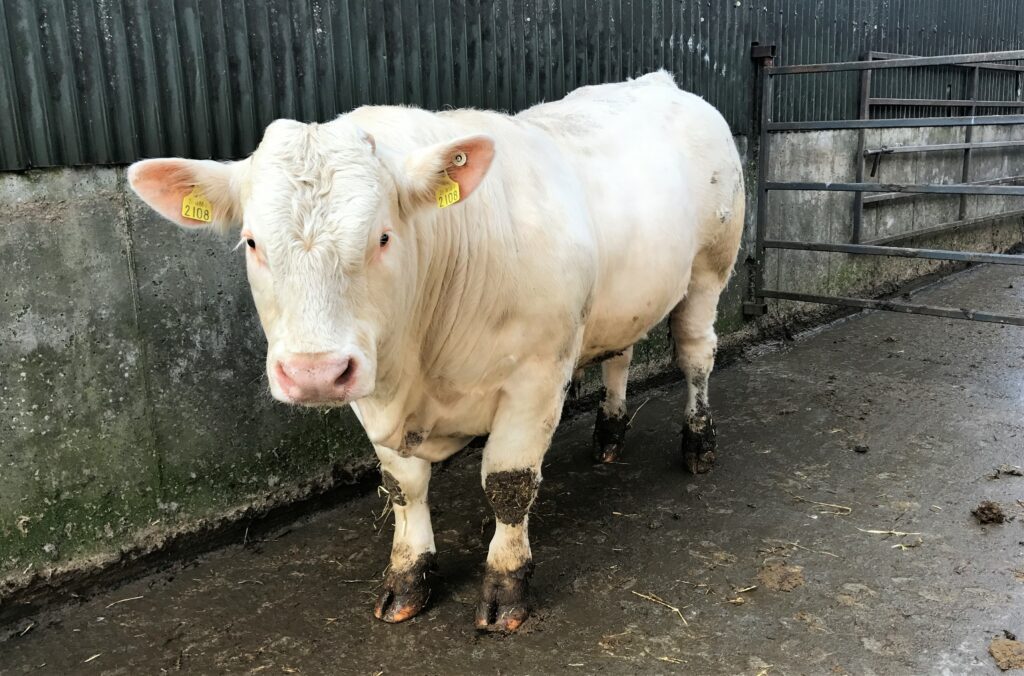Breeding has commenced on numerous suckler farms throughout the country. Ideally, farmers should check the performance of their stock bull 10-12 weeks prior to introducing him to a herd of cows. Farmers should check his vitals to have him ‘fit for work’ come breeding.
Farmers need to check the bull’s feet and locomotion to ensure that he is walking correctly and that there’s no evidence of lameness.
It’s important to notice whether the bull is holding his feet or if there are signs of redness or swelling. It’s worth remembering that it can take 8-10 weeks for an infection to clear and for semen production levels to return to normal.
The general recommendation for the circumference of the testicles on most breeds at 24 months is a minimum of 34cm. The bull’s testicles should also feel firm with no abnormalities or lumps.
It’s also critical to consult your vet about conducting a bull breeding soundness examination. It’s estimated that 25% of stock bulls are sub-fertile and, with this in mind, a bull fertility test may be warranted. In the grand scheme of things, it’s a very low cost when compared to finding cows empty upon pregnancy diagnosis.
The health status of the bull must also be considered, especially if you have to source the bull from an outside herd.
If you are bringing a new bull into your herd, a health test should be prioritised and it should focus on diseases such as: BVD; IBR; Johne’s disease; and lepto.
A bull with an unknown health status or vaccination history could introduce disease into your herd – the negative consequences of which may far outweigh the benefits.
It is preferred that any required vaccinations or parasite control treatments should be carried out well in advance of the breeding season; ideally 6-8 weeks before introducing the bull to your herd, as they could lead to reduced fertility.
As with all things in life, practice makes perfect and it’s important to bear this in mind if you’re introducing a young bull to your herd.
Keep a close eye on bulls in the first few days of the breeding season to ensure that they’re mounting properly. Applying a chin-ball harness or keeping a record of the cows served by the stock bull will give you an indication of whether or not the bull is working. If he’s not up to the task, take action promptly.
Regardless of how long the stock bull is introduced to the herd, safety is warranted at all times. The bull’s testosterone levels will be elevated during the breeding season and can be become unpredictable and dangerous.

